Field Notes: Lys Kernow, Redruth + news (21 May 2025)
Exploring examples of C20 modernism in Redruth, Cornwall. Plus an unexpected Hepworth and a roundup of local news.
A couple of weeks ago I popped down to Redruth to visit the rather lovely Kresen Kernow (a home for the Cornish Archives).
I spent the afternoon carefully unrolling architectural drawings of Lys Kernow. The very thick cartridge paper had metal hole protectors for when they had once been pinned to drawing boards. The meticulous drawings with their neat writing reminded me of visiting my late father in his offices in the British Rail Property Board, where similarly precise drawings were on display. Perhaps it was that connection that has made me surprisingly protective about Hicklin’s work.
Before the archive session, I had taken the opportunity to wander Redruth and look for buildings. Scroll on for the field report.
You can get access to the Lys Kernow deep dive, and early access to future deep dives, by upgrading to a paid sub. It works out as less than 70p a week.
Redruth
Redruth is always linked to Cambourne in my mind. The two towns were the centre of the Cornish mining industry. Mining goes back a long way in Cornwall. A long, long way: Cornish tin was being traded with the Mycenaeans over three thousand years ago. There’s an old saying that if you went down a mine anywhere in the world there’d be a Cornishman at the bottom. That’s because by the industrial revolution Cornwall was at the forefront of mining technology: Trevithick’s engines existed well before Stephenson built the Rocket. Cornish miners’ families took the pasty to Mexico in the 1820s, where pasties became pastes. Despite the last working mine closing in Cornwall in 19981, the Cambourne School of Mines (now relocated to Penryn) remains a world leader.
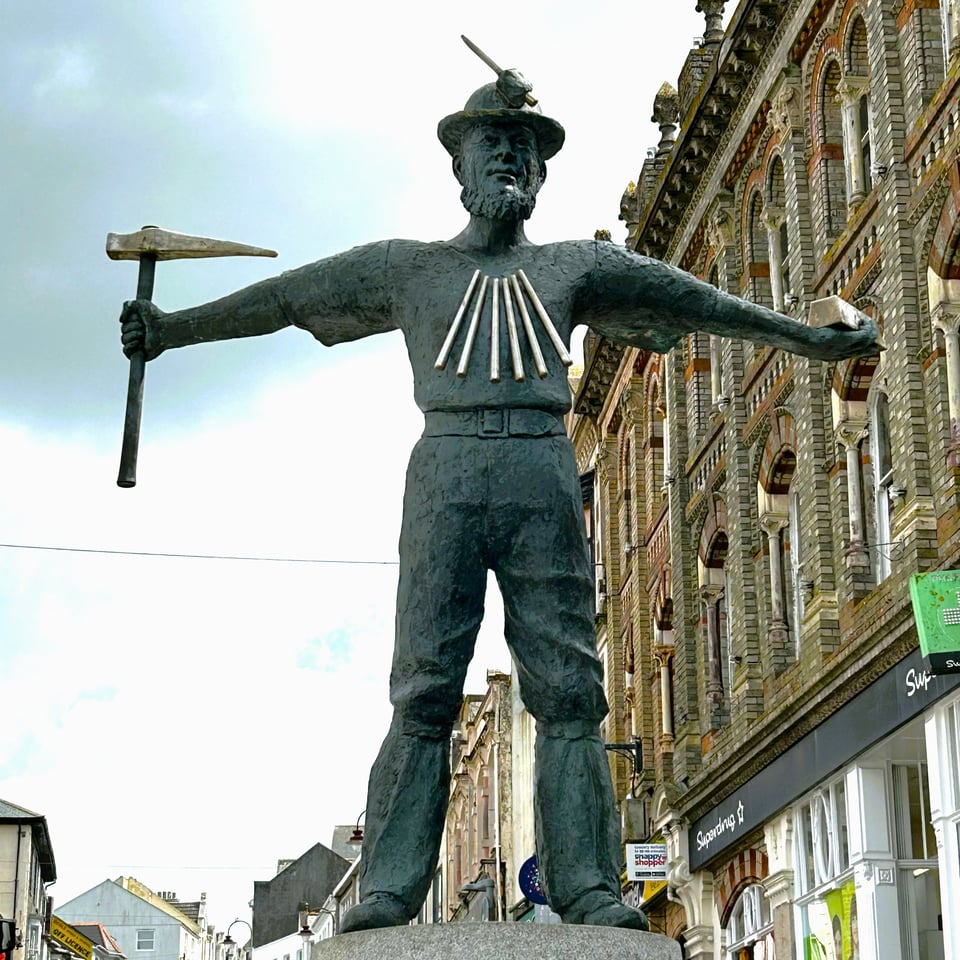
Redruth used to produce two-thirds of the world’s supply of copper. Even as the mining industry in Cornwall began its decline in the nineteenth century, Redruth exported its expertise around the world and the town remained wealthy.
You would not think that of it now.
The day I visited was the kind of hot, sullen day that only Cornwall offers. I always love that sense of the air thickening around me, heavy with heat. I’d asked on Bluesky about buildings to look out for, and had a short list of three. First I climbed up to the Cardrew industrial estate, as I knew that might be the hardest one to find. From the road, I could see the land dropping down to the northern coast four miles away.
Conway Bailey Transport, Cardrew Way
I’m not sharing photos of this one as it had a lot of security. The site has large modern warehouses attached to a 1960s Brutalist office block. At the entrance is a 1960s security checkpoint, though no-one was in it when I walked though. The offices are made up of two blocks. One is a broad two storey square of rough concrete, with windows set into long vertical recesses. The reception area steps out on the northern side of this block, with full length glass windows and doors. The second, single storey block sits to the west. Inside, I could see a concrete staircase with very nice teak or rosewood banisters.
I’d had this building described as the JI Case factory. JI Case closed it in 1990 with the loss of nearly 100 jobs. It was then a Austin Hinkley Furniture factory until they went into administration in 2009 with a loss of 96 jobs. At some point after that it became a Keter factory until that closed in 2023 with the loss of around 100 jobs.
Having successfully found the hardest one of the shortlist, I headed back into town, descending through the East End to Fore Street. The decline of the town is most visible along here. Up on the industrial estate I had spotted the Seasalt distribution centre, from which trucks deliver Cornish clothing to shops around the country. But there is no Seasalt branch in Redruth itself.
Iceland, 45 Fore Street, Redruth
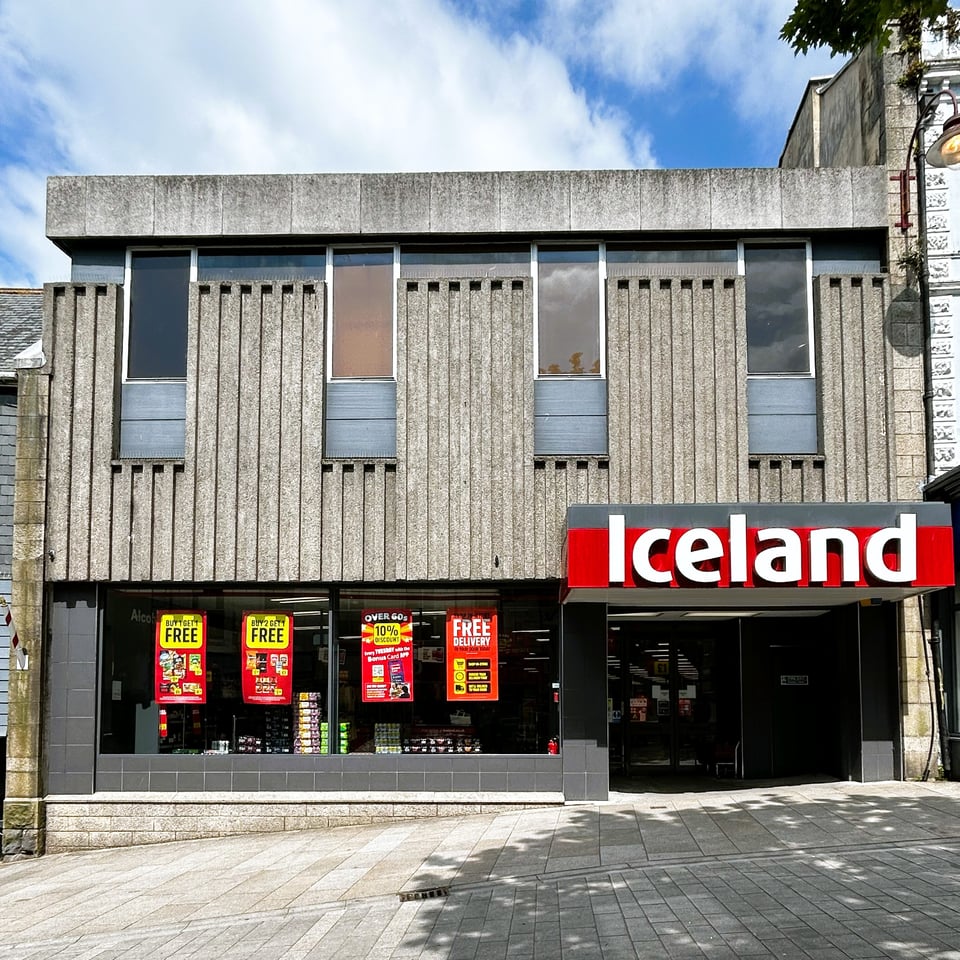
The planning portal suggested Tesco applied for planning permission in 1947 and only got the decision in 1968. This has to be a digitization error since most of the historic records have the same registration date of 1 Feb 1947 but different decision years. And then there’s this image of the opening of the Tesco in 1969.
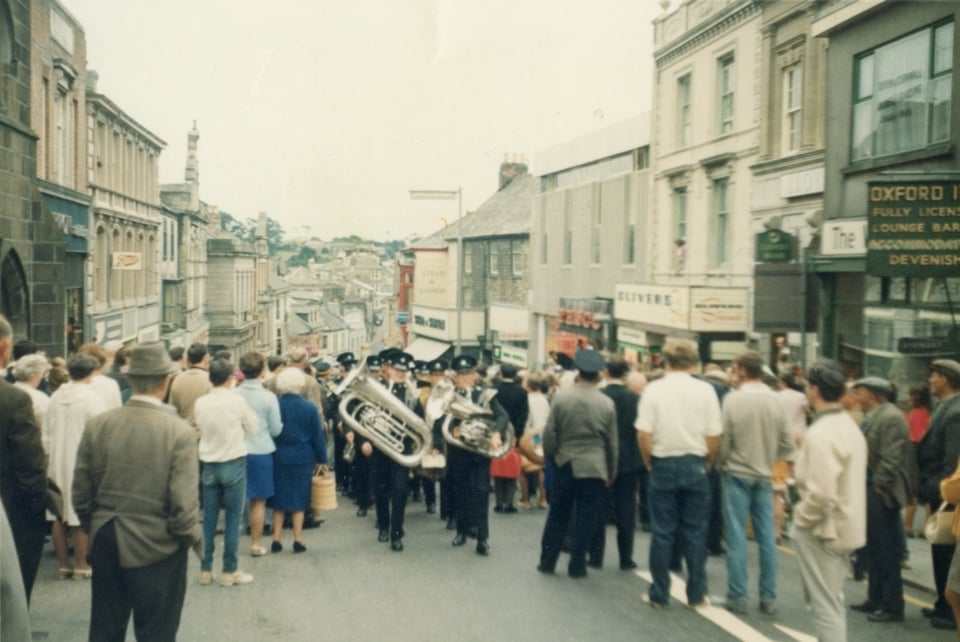
The photo caption says Tesco was on the site of Tabb’s Hotel (a rather grand Victorian edifice that had ended up a dancing school and betting shop).
Iceland took over the building in 2000. There are signs that the concrete is starting to crumble: in a couple of places the rusting rebars were showing. I rather like the symmetry and squareness of this one.
Regal Cinema, Fore Street, Redruth
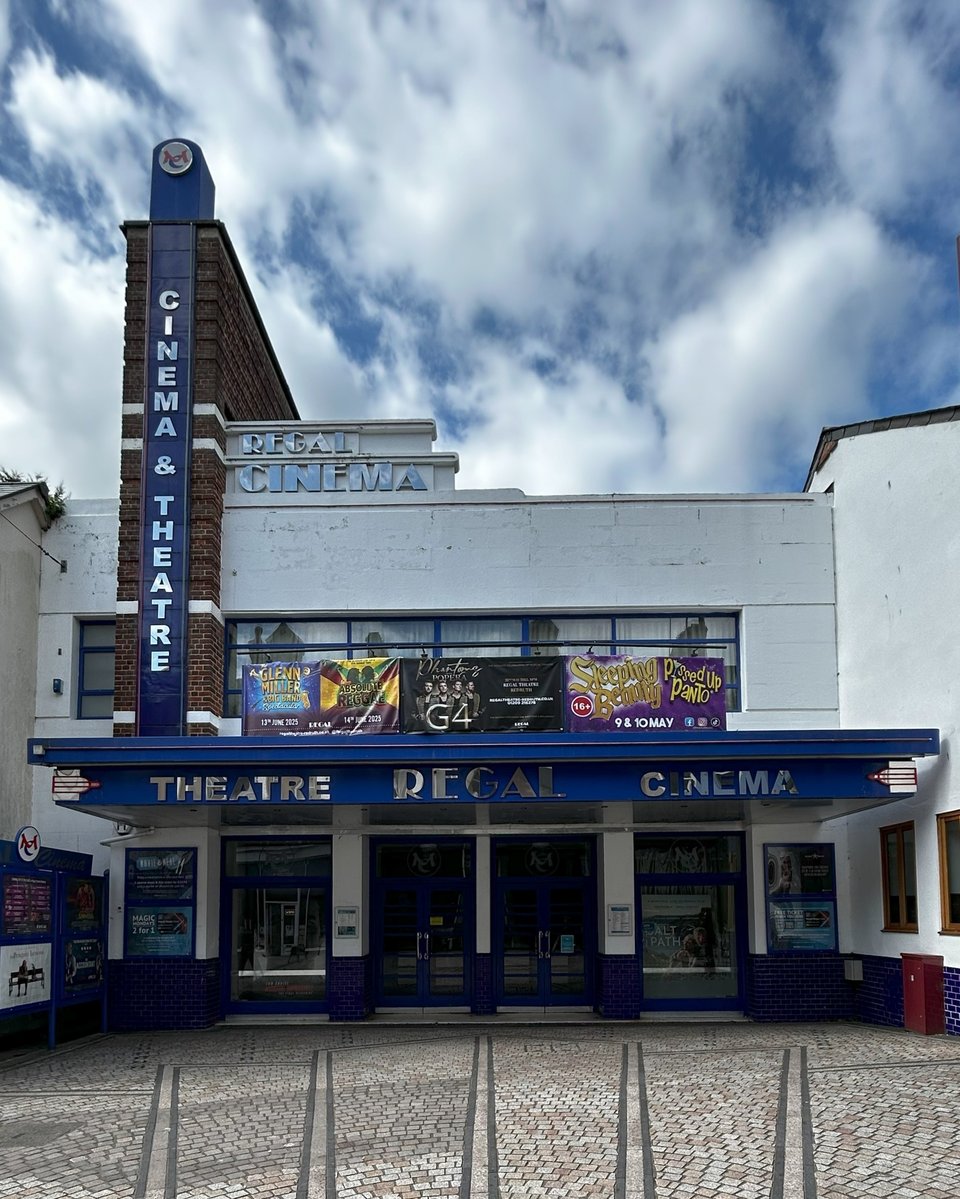
Designed by W H Watkins of Bristol in 1935, this is the kind of building you fall for instantly. A brick clad facade with Art Deco details such a fin tower and a streamlined sign face the street. The owners, regional cinema chain Merlin, have not shied away from its style, with all the other outer walls painted in bold tones of blue and red. Lots of original detail in the windows too. I’m strongly tempted to do a deep dive on it as it is so delightful, so I’m keeping these notes short for now.
Winklow House, Chapel Street, Redruth
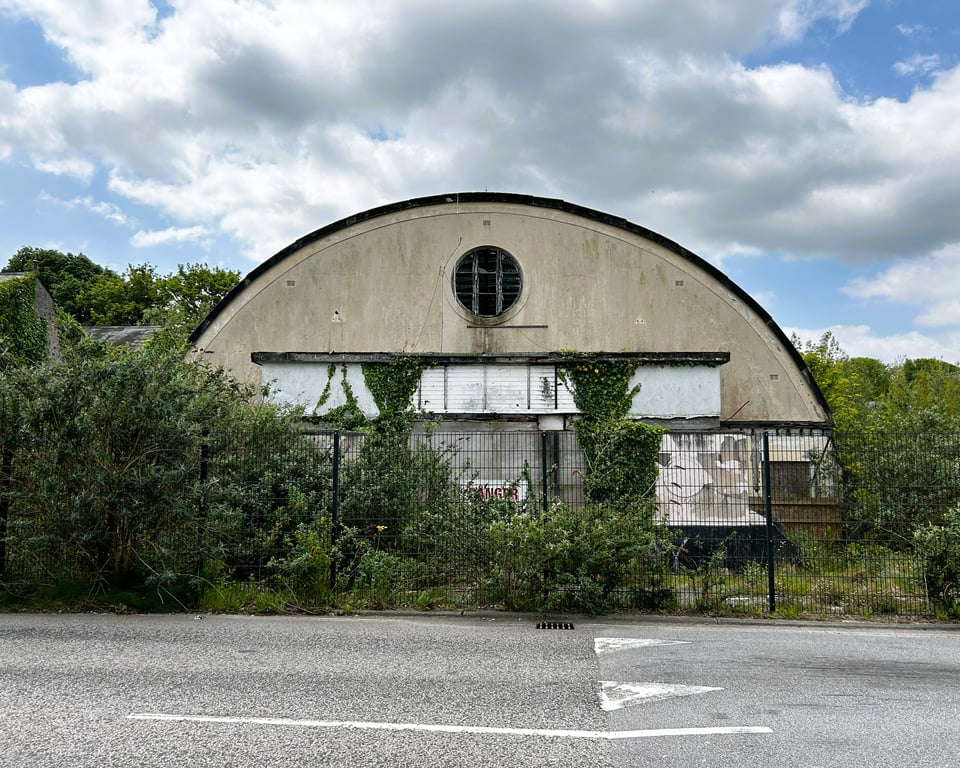
On the road out to Kresen Kernow, I noticed what looked like a Quonset hut with a rather nice circular window in it along with a large ‘danger keep out’ sign. This is, in fact, Winklow House, and has a Lamella roof structure (not a Quonset at all).
It was built in 1937 as a Territorial Army drill hall. It then became a dance hall during WW2, a boxing arena in the 1950s, a furniture warehouse and then a clothing factory in the 1960s until Redruth Brewery bought it in 1967 (166190 Heritage Gateway)
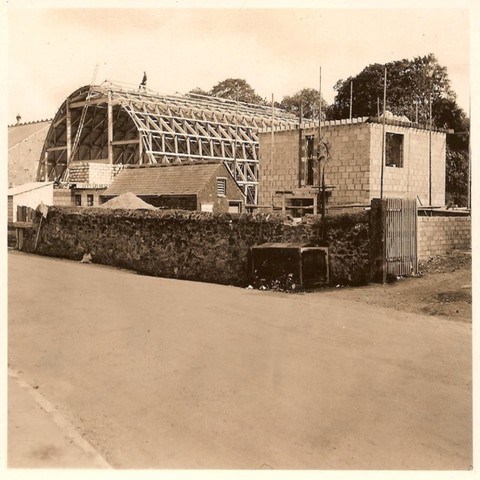
A 2022 visual inspection survey carried out for Redruth Town Council suggests the building is at structural risk due to its dereliction. The Lamella Construction Company (British Propriety) built 120 structures in the UK: I don’t know how many are still standing.
Kresen Krenow
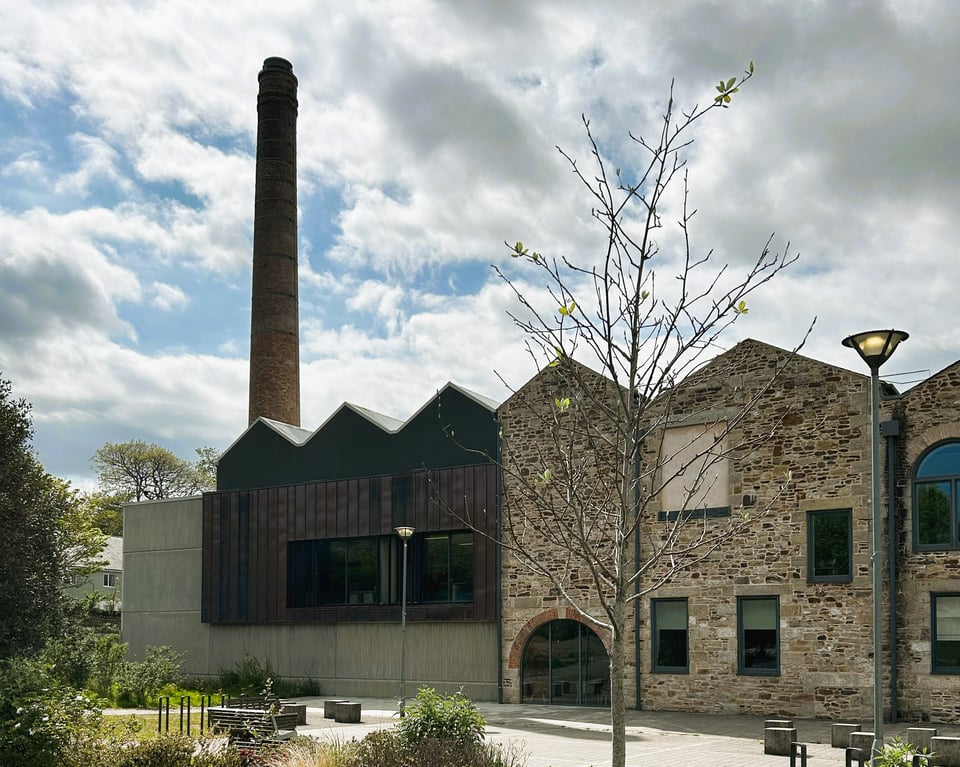
The archives themselves are a modern redevelopment of the derelict Redruth Brewery buildings so are outside the remit of this project. I do think it has been charmingly done. The large foyer had interesting displays, plus a surprise Hepworth by the loos.
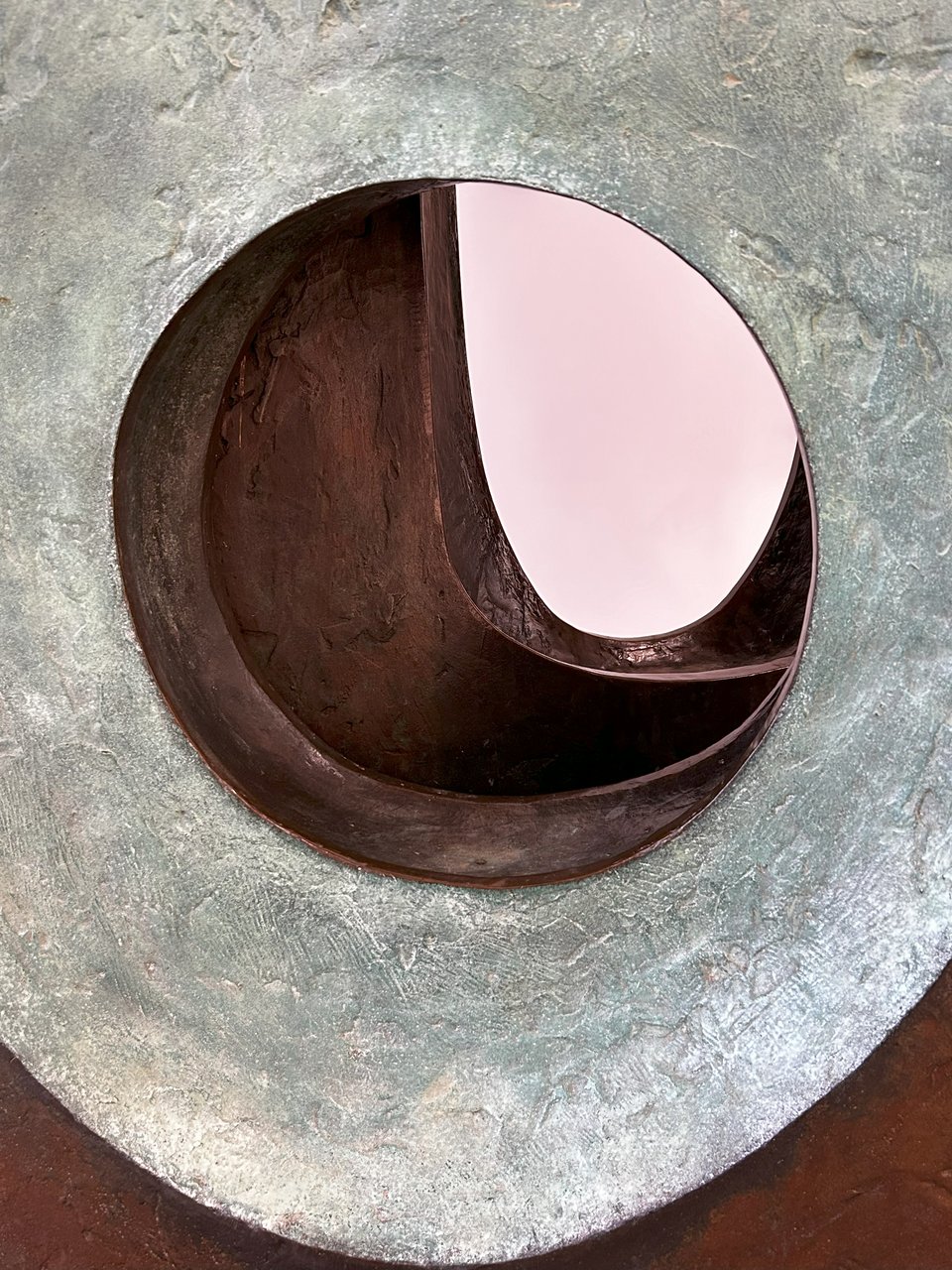
The latter, Dual Form (1965), is on loan from St Ives’ Guildhall to protect it while its normal home is being renovated.
Burgh Island Hotel
My look at the history of Burgh Island Hotel is now unlocked and free to read, mes amis.

Burgh Island Hotel, Bigbury-on-Sea (1929) • Buttondown
The story of Burgh Island Hotel is the story of Art Deco itself. Then I started to dig, and discovered something that didn't fit.
Thank you to the paying subscribers whose contributions help me look through hundreds of local newspaper clippings on the British Newspaper Archives website.
If you like the deep dives, you can upgrade to support the work researching them.
Other local news of C20th buildings
In which I fight my way through local ad-laden news sites to find stories about twentieth century buildings and related topics. This week, we’ve three seaside pools and a former bus station.
Club Tropicana drinks are free. 🎶
Weston-Super-Mare’s Tropicana was built in 1937 as an open air pool. Very sensible, given how far out the sea goes at Weston’s beach. It was known simply as “the Pool”. An indoor venue was added in the 1980s, along with a Wham!tastic rebrand as Tropicana. Closed in 2000, it hosted Banksy’s Dismaland Bemusement Park in 2015 and the See Monster rig in 2022.
This owners have now received planning permission to rebuild the 1980s venue, and to restore the 1930s facades on the seafront.
Iconic seaside site's future as 'nationally significant' venue secured
Tinside Lido, Plymouth
The Grade II Tinside Lido in Plymouth (J Wibberley, 1935) to reopen for swimming on 25 May. Refurb still ongoing though. It'll be 90 years old this October. I’m hoping to write about this one in depth, as it’s a pool I’ve been to back in the 1970s.
Plymouth's outdoor pools announce 2025 opening date
Jubilee Pool, Penzance
Get out your cossie and and tea frocks. The Grade II Jubilee Pool in Penzance (Captain F Latham, 1935) is also turning 90 this year, and is holding a 1930s-themed birthday party on 31 May.
Jubilee Pool to celebrate 90th anniversary with day of festivities
Former bus station, Taunton
Taunton Town Council have agreed to take the former bus station off Somerset Council’s hands. I’m loving the wraparound ribbon window on it, and vaguely recall seeing it under the streetlights whenever I had to get the early-bird National Express up to Heathrow.
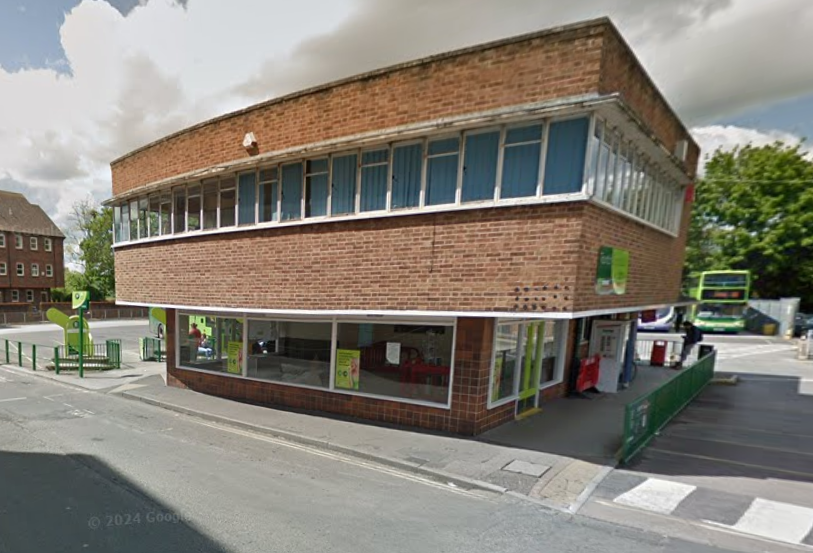
Taunton Town Council are now consulting on possible uses for the building. On the news item about it, most commentators thought the best use would be…a bus station. Feedback by 8 June to Public Consultations.
If you know of an event or news item you think I should know about, you can contact me on Bluesky.
I’m off to start digging into the two buildings already on my research list, and maybe to contemplate the marvel of the Regal in Redruth again.
If you’re enjoying this newsletter, feel free to share it with others.
If someone has sent you this, you can subscribe below.
A free sub will get you the field notes and news, and notice that a deep dive has been published.
A paid sub (£3 a month) will unlock the deep dives early, plus occasional bonus content and the warm knowledge that you’re supporting the project.
Exploratory works are underway for a Lithium mining site near St Austell. Kernow shall rise again! ↩